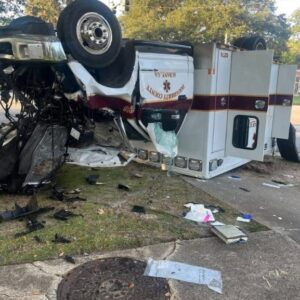It was a calm afternoon in September 2024 when chaos nearly struck again—former President Donald Trump became the target of a second assassination attempt.
The news hit like a shockwave, but it wasn’t an isolated act. Instead, it fit into a grim historical pattern that stretches back to the earliest days of the American republic. The presidency has always been more than a position of leadership—it’s a symbol.
And symbols attract devotion, hatred, and, far too often, bullets.
On September 15, 2024, reports confirmed that Trump narrowly escaped an attack at his Florida golf course, just months after a similar attempt at a Pennsylvania rally. The details were familiar: an armed individual, rapid gunfire, the quick response of the Secret Service.
In minutes, what could have been a national tragedy turned into another chapter in America’s long and troubling history of political violence.
Nearly forty percent of all U.S. presidents have been targeted at some point. Four—Abraham Lincoln, James Garfield, William McKinley, and John F. Kennedy—lost their lives in office. The numbers alone reveal how dangerous the Oval Office truly is.
Why does this keep happening? The presidency represents far more than political power—it embodies the values, divisions, and conflicts that define the nation. Presidents become lightning rods for both love and rage. For a small number of people, especially those lost in ideology or delusion, attacking that symbol feels like striking at the nation itself. What they call “justice” or “revenge” is usually nothing more than chaos wrapped in conviction.
Historically, the weapon of choice has barely changed. From John Wilkes Booth’s pistol to John Hinckley Jr.’s revolver, almost every assassination attempt has involved a gun. Firearms have been the constant companion of political violence in the United States. And while motives vary—from radical politics to personal obsession—the pattern of access and opportunity remains hauntingly consistent.
Trump’s case adds a modern twist. Both of his alleged attackers were described as former supporters, people whose admiration curdled into resentment. That dynamic—fervent loyalty turning into personal betrayal—feels distinctively modern, amplified by social media echo chambers and the relentless speed of online rage. In an age where every political decision sparks instant outrage, the line between protest and violence has become dangerously thin.
To understand today’s threats, it helps to remember the echoes of history. Lincoln’s assassination in 1865 wasn’t an isolated act of madness—it was a coordinated attempt to decapitate the Union government. That same night, Secretary of State William Seward was stabbed in his own home, and Vice President Andrew Johnson narrowly escaped death. It was a full-scale conspiracy driven by political hatred and delusion, and it showed just how fragile a nation can become under internal fire.
A century later, President Gerald Ford became one of the luckiest men to hold the office. In 1975, he survived two separate assassination attempts just seventeen days apart. The first came from Lynnette “Squeaky” Fromme, a member of Charles Manson’s cult, whose gun failed to fire because no bullet was chambered. The second came from Sara Jane Moore, who actually fired two shots before a bystander, Oliver Sipple, grabbed her arm and deflected the aim. Ford escaped both attacks physically unharmed—but those close calls defined how presidents would be protected for decades to come.
Then there was Ronald Reagan. In 1981, he was shot outside the Washington Hilton by John Hinckley Jr., who believed killing the president would impress actress Jodie Foster. The bullet ricocheted off his limousine and punctured his lung. Reagan’s reaction—his humor, his grace, his resilience—turned him into an icon of stoic leadership. As he lay bleeding, he reportedly quipped to doctors, “I hope you’re all Republicans.” That blend of toughness and wit became a blueprint for how presidents are expected to face mortal danger: unflinching, composed, and somehow still human.
Fast forward to today. The Trump attempts, like those before, underscore how the threat has evolved in a polarized, hyperconnected world. Security agencies now operate under constant alert, monitoring not just physical risks but also online chatter that can morph into real-world violence. The modern Secret Service deals with a unique challenge: the democratization of information has made plotting easier, attention-seeking more rewarding, and anonymity more dangerous. Political violence is no longer the product of organized conspiracies—it can now emerge from isolated, self-radicalized individuals who act out of grievance and fantasy.
Every attempt forces the same reckoning: how can a democracy that prizes freedom of speech and open access also protect its leaders from the consequences of hatred? The uncomfortable truth is that it can’t—not entirely. Presidents live under a constant shadow, their every step calculated around invisible threats. The public sees the rallies, the speeches, the smiles—but behind every handshake and every golf outing is a ring of agents scanning rooftops, monitoring crowds, and waiting for the sound that changes everything.
The historical record makes one thing painfully clear: assassination attempts are not relics of the past. They are a persistent scar on American democracy. From Booth’s theater box to a golf course in Florida, the motives have changed but the meaning remains the same—a violent act against not just a man, but a nation. Yet, time and again, the system has endured. The country has mourned, adapted, and rebuilt, proof that democracy—though wounded—survives.
In reflecting on the September 2024 attack, it’s impossible not to see the pattern of resilience that follows every act of violence. When chaos strikes, people rally. Law enforcement tightens. Citizens, regardless of party, feel the weight of what’s at stake. Tragedy, paradoxically, reminds the nation of its shared humanity.
The presidency, by its very nature, will always carry risk. Power invites danger. Fame invites obsession. But it also reveals courage—in those who serve, in those who protect, and in those who stand up afterward demanding better. From the Lincoln conspirators to the would-be gunmen of the modern era, every failed attempt has left behind the same lesson: America’s strength lies not in its leaders alone, but in the endurance of the people who refuse to let hate win.
Donald Trump’s near misses in 2024 are not just moments in his personal story—they’re part of a long American narrative written in both violence and resolve. The presidency remains one of the most dangerous jobs on earth, but also one of the most symbolic. It embodies the paradox of democracy itself: fragile enough to be threatened by one man’s bullet, yet strong enough to rise again after every shot.
In the end, that’s the real story—not the attacks, not the shooters, but the survival. A nation defined by conflict still chooses continuity. Every time the unthinkable nearly happens, it reminds us why democracy, for all its flaws, endures. And that endurance, not the violence, is what history remembers.




